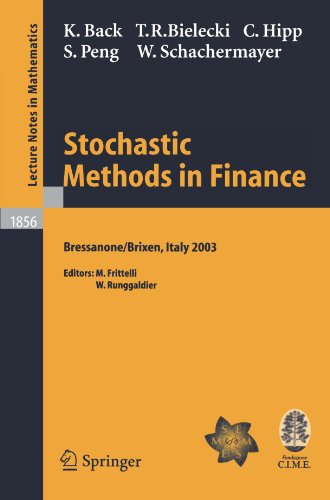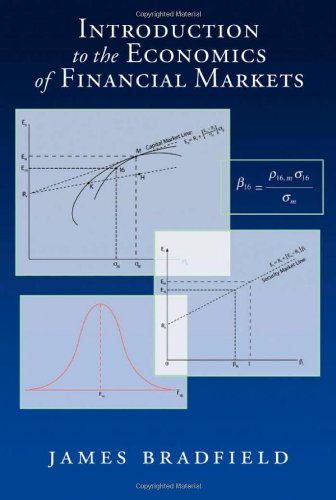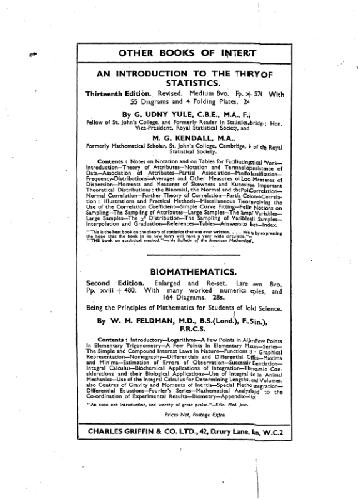John Knight, Stephen Satchell0750660066, 9780750660068, 9780080455327
Table of contents :
Linear Factor Models in Finance……Page 3
Contents……Page 6
List of contributors……Page 12
Introduction……Page 16
1.1 Theoretical reasons for existence of multiple factors……Page 18
1.3 Estimation of factor pricing models……Page 22
Bibliography……Page 26
2.1 Introduction……Page 29
2.2 The multivariate skew normal distribution and some of its properties……Page 31
2.3 Conditional distributions and factor models……Page 34
2.5.1 Basic return statistics……Page 36
2.5.2 Overall model fit……Page 38
2.5.3 Comparison of parameter estimates……Page 40
2.5.4 Skewness parameters……Page 41
2.5.5 Tau and time-varying conditional variance……Page 42
References……Page 44
3.1 Introduction……Page 47
3.2.1 Arbitrage Pricing Theory……Page 48
3.2.2 Multivariate F test used in linear factor model……Page 49
3.3 Distribution of the multivariate F test statistics under misspecification……Page 51
3.3.1 Exclusion of a set of factors from estimation……Page 52
3.3.2 Time-varying factor loadings……Page 58
3.4.1 Design……Page 60
3.4.2 Factors serially independent……Page 62
3.4.3 Factors autocorrelated……Page 65
3.4.4 Time-varying factor loadings……Page 66
3.4.5 Simulation results……Page 67
3.5 Conclusion……Page 74
Appendix: Proof of proposition 3.1 and proposition 3.2……Page 76
4.1 Introduction……Page 78
4.2.1 The excess return generating process (when factors are traded portfolios)……Page 79
4.2.2 The excess return generating process (when factors are macroeconomic variables or non-traded portfolios)……Page 81
4.2.3 Obtaining the (K x 1) vector of risk premia l……Page 82
4.3 Introducing a Bayesian framework using a Minnesota prior (Litterman’s prior)……Page 83
4.3.1 Prior estimates of the risk premia……Page 84
4.3.2 Posterior estimates of the risk premia……Page 87
4.4 An empirical application……Page 89
4.4.1 Data……Page 90
4.4.2 Results……Page 91
References……Page 94
Appendix……Page 97
5.1 Introduction……Page 100
5.2 Methodology……Page 101
5.2.1 A Bayesian decision-theoretic approach……Page 102
5.2.2 Estimation by Monte Carlo integration……Page 103
5.3 Style analysis in the MSCI sector portfolios……Page 104
References……Page 110
6.1 Introduction……Page 112
6.2.1 Asset pricing frameworks……Page 114
6.2.2 Specifications to be tested……Page 115
6.3.1 Multivariate F test……Page 116
6.3.2 Average F test……Page 117
6.3.3 Stochastic discount factor using GMM with Hansen and Jagannathan distance……Page 119
6.3.4 A look at the pricing errors under different tests……Page 120
6.4.1 Data sources……Page 121
6.4.2 Independent variables: excess market return, size return factor and book-to-market return factor……Page 122
6.4.3 Dependent variables: size-sorted portfolios, beta-sorted portfolios and individual assets……Page 126
6.5.1 Formation of WT……Page 131
6.5.2 Model 1……Page 132
6.5.3 Model 2……Page 140
6.5.4 Model 3……Page 150
6.6 Simulation……Page 155
6.7 Conclusion and implication……Page 163
References……Page 165
7.1 Introduction……Page 167
7.2……Page 168
7.3……Page 172
References……Page 173
List of symbols……Page 174
8.1 Introduction……Page 176
8.2 Recent trends in the ‘globalization’ of equity markets……Page 178
8.2.1 ‘Home bias’……Page 179
8.2.2 The rise and rise of the multinational corporation……Page 182
8.2.3 Increases in market concentration……Page 184
8.3 Modelling country and sector risk……Page 187
8.4 The estimated country and sector indices……Page 193
8.5 Stock and portfolio risk attribution……Page 198
8.6 Conclusions……Page 205
8.7.1 Accounting for currency risk……Page 206
References……Page 207
Appendix A: A detailed description of the identifying restrictions……Page 210
Appendix B: The optimization algorithm……Page 214
Appendix C: Getting the hedge right……Page 216
9.1 Introduction……Page 219
9.2 Literature review……Page 220
9.4 Empirical results……Page 221
9.5 Discussion……Page 222
References……Page 224
10.1 Introduction……Page 227
10.2 A combined linear factor model……Page 228
10.3 An extended model……Page 230
10.4 Model estimation……Page 231
10.5 Conditional maximization……Page 233
10.6 Heterogeneous errors……Page 234
10.7 Estimating the extended model……Page 235
10.8 Discussion……Page 237
10.9 Some simulation evidence……Page 238
10.10 Model extensions……Page 239
10.11 Conclusion……Page 240
References……Page 241
11.1 Introduction……Page 243
11.2.1 Types of linear factor model……Page 244
11.2.2 Estimation issues……Page 245
11.3 Attributing investment risk with a factor analytic model……Page 246
11.3.1 Which attributes can we consider?……Page 247
11.4.1 Which attributes should we consider?……Page 248
11.4.2 Attributing risk with valuation attributes……Page 253
11.5 Category attributes……Page 254
11.5.1 Which categories should we consider?……Page 256
11.5.2 Attributing risk with categories……Page 257
11.6.2 Attributing risk with macroeconomic time series……Page 258
11.7 Reporting risk – relative marginals……Page 259
11.7.1 Case study: Analysis of a UK portfolio……Page 261
11.8 Conclusion……Page 262
References……Page 263
Appendix……Page 264
12.1 Introduction……Page 266
12.2 Review……Page 267
12.3 Discussion……Page 270
12.4 The model……Page 271
12.5 A few examples……Page 274
References……Page 276
13.1 Introduction……Page 279
13.2 Risk decomposition: cross-sectional characteristics……Page 281
13.3.1 Industry classification projected onto factor exposures……Page 286
13.3.2 Incorporating expected return information……Page 287
13.4 Summary and discussion……Page 290
References……Page 291
Index……Page 294







Reviews
There are no reviews yet.